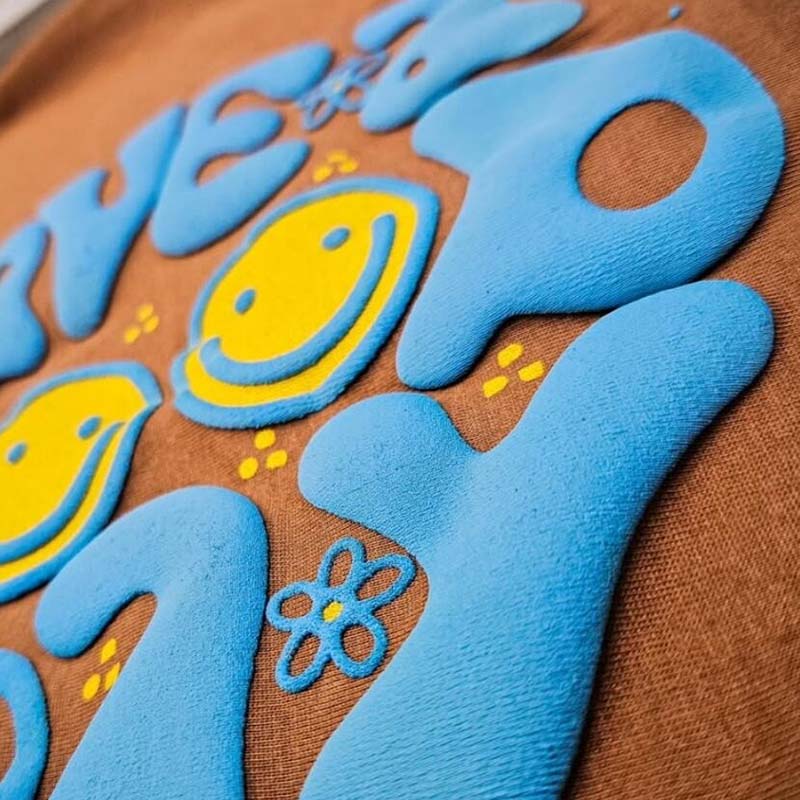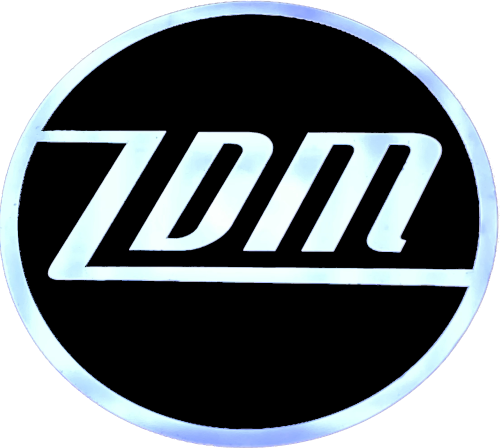Puff Printing: Technical Principles, Process Flow And Application Prospects
In the diversified development of modern printing technology, Puff Printing (3D printing) has become a popular choice in the fields of brand clothing, industrial logos and packaging design with its unique visual effects and tactile experience. Through high-precision screen production and layered ink penetration technology, puff printing can achieve a three-dimensional, colorful and durable pattern effect on the surface of a variety of materials. This article will explore the technical principles, process flow and application prospects of Puff Printing in different fields.
1. Technical Principles of Puff Printing
The core of Puff Printing lies in its special ink formula and printing process. Through high-precision screen production, the ink can penetrate into the surface of the substrate in a layered manner to form a raised three-dimensional effect. The key to this technology lies in the chemical reaction of the ink: during the high-temperature baking process, the foaming agent in the ink releases gas, causing the ink to expand and solidify, thereby forming a three-dimensional "relief" effect.
In addition, Puff Printing technology has strict requirements on the viscosity, fluidity and curing temperature of the ink. High-viscosity ink can ensure clear edges of the pattern, while layered printing can achieve different levels of ink thickness by controlling the scraper pressure, thereby enhancing the three-dimensional sense of the pattern. This process is not only suitable for traditional textiles such as cotton and synthetic fibers, but also can achieve excellent adhesion on hard materials such as metal and plastic.

2. Puff Printing Process
Design and Plate Making
The first step of Puff Printing is to design the pattern and make a high-precision screen. The layering and three-dimensional effect of the pattern need to be considered in the design stage, and different ink thicknesses are usually achieved through layered design. During the plate making process, the aperture size and screen tension of the screen directly affect the penetration effect of the ink, so it needs to be optimized according to the material of the substrate and the complexity of the pattern.
Ink Selection and Preparation
The ink used in Puff Printing usually contains foaming agent, resin and pigment. Different substrates need to choose the appropriate ink formula. For example, cotton fabrics are suitable for soft inks, while metal surfaces require high temperature and corrosion resistant inks. In addition, the mixing of inks requires precise control of the proportion of foaming agents to ensure uniform expansion effect.
Printing and curing
During the printing process, the ink is printed in layers on the surface of the substrate by controlling the pressure and speed of the scraper. After printing, the substrate needs to be cured in a high-temperature oven, usually at a temperature between 160℃ and 200℃, for about 1 to 3 minutes. During the curing process, the foaming agent releases gas and the ink expands to form a three-dimensional effect.
Quality inspection
The last step is to conduct quality inspection on the printed product, including indicators such as pattern clarity, three-dimensional sense, adhesion, and washability. High-quality Puff Printing products should have bright colors, clear edges, strong three-dimensional sense and durability.
3. Application areas of Puff Printing
Branded clothing
Puff Printing is most widely used in the field of clothing, especially on T-shirts, sweatshirts and sportswear. Its three-dimensional effect can significantly enhance the visual appeal of clothing. At the same time, by using special inks such as fluorescent and reflective inks, unique luminous or reflective effects can be achieved to meet personalized needs.
Industrial identification and packaging
In the field of industrial identification and packaging, the durability and high saturation of Puff Printing make it an ideal choice. For example, signboards on metal surfaces, brand logos on plastic packaging, etc., can achieve long-term visual effects and corrosion resistance through Puff Printing.
Home and decorations
In recent years, Puff Printing has also been widely used in home decorations, such as pillows, curtains and wall stickers. Its three-dimensional effect and rich color expression can add an artistic sense to the home environment.
4. Future prospects of Puff Printing
With the continuous advancement of technology, the application scope of Puff Printing will be further expanded. For example, by introducing digital printing technology, Puff Printing can achieve more complex pattern design and higher production efficiency. At the same time, the research and development of environmentally friendly inks will also promote the development of Puff Printing in the field of sustainable development.
In short, Puff Printing has become an important part of modern printing technology with its unique three-dimensional effect and wide material compatibility. Whether it is brand clothing, industrial logos or home decoration, Puff Printing can provide excellent visual and tactile experience. In the future, with the continuous innovation of technology, Puff Printing is expected to show its unique charm in more fields.




